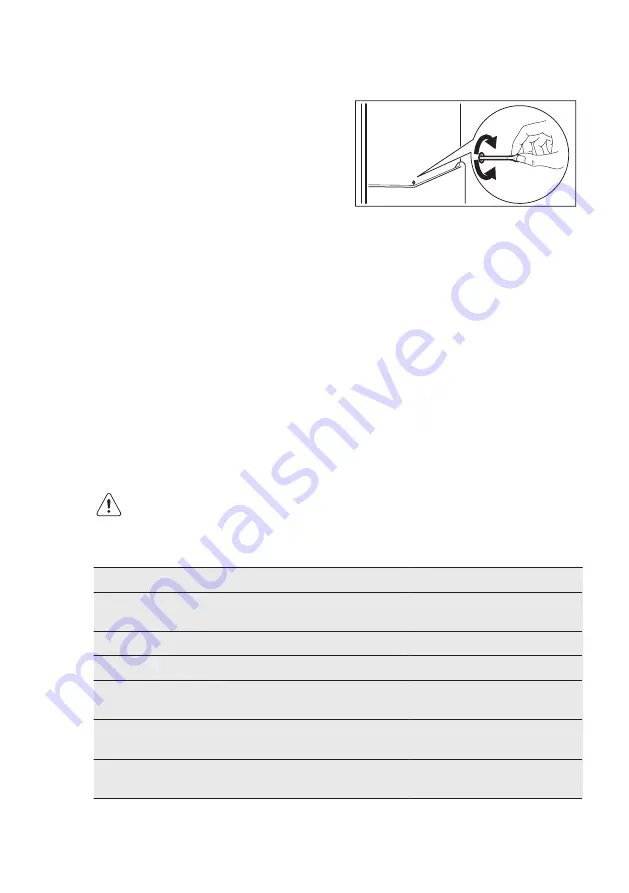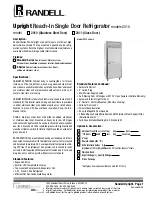
1.
Clean the inside and accessories with
lukewarm water and some neutral
soap.
2.
Regularly check the door seals and
wipe clean to ensure they are clean
and free from debris.
3.
Rinse and dry thoroughly.
4.
If accessible, clean the condenser
and the compressor at the back of
the appliance with a brush.
This operation will improve the
performance of the appliance and
save electricity consumption.
5.3
Defrosting of the
refrigerator
Frost is automatically eliminated from the
evaporator of the refrigerator
compartment every time the motor
compressor stops, during normal use.
The defrost water drains out through a
trough into a special container at the
back of the appliance, over the motor
compressor, where it evaporates.
It is important to periodically clean the
defrost water drain hole in the middle of
the refrigerator compartment channel to
prevent the water overflowing and
dripping onto the food inside.
5.4
Periods of non-operation
When the appliance is not in use for long
periods, take the following precautions:
1.
Disconnect the appliance from
electricity supply.
2.
Remove all food.
3.
Clean the appliance and all
accessories.
4.
Leave the door/doors open to
prevent unpleasant smells.
6.
TROUBLESHOOTING
WARNING!
Refer to Safety chapters.
6.1
What to do if...
Problem
Possible cause
Solution
The appliance is noisy.
The appliance is not sup-
ported properly.
Check if the appliance stands
stable.
The lamp does not work.
The lamp is in stand-by.
Close and open the door.
The lamp is defective.
Refer to "Replacing the lamp".
The compressor operates
continually.
Temperature is set incor-
rectly.
Refer to "Operation" chapter.
Many food products were
put in at the same time.
Wait some hours and then
check the temperature again.
The room temperature is
too high.
Refer to climate class chart on
the rating plate.
www.aeg.com
16
















































